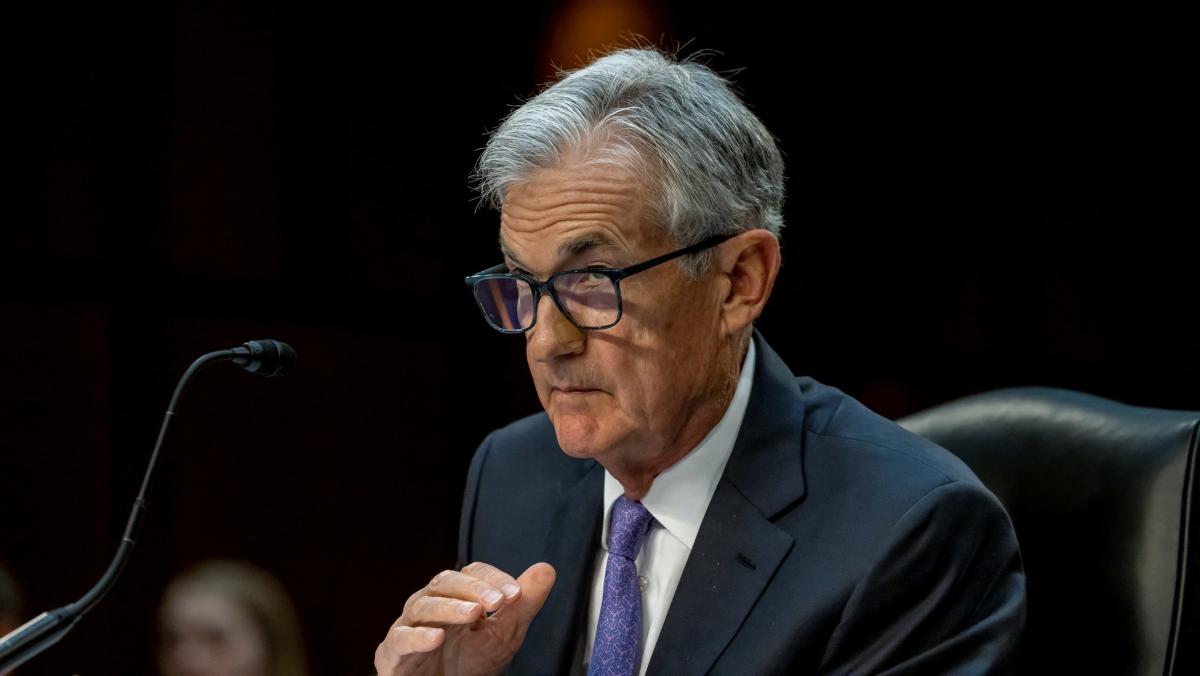The Fed's Tightrope Walk: Trump's Policies And The Incoming Chair

Table of Contents
Trump's Economic Policies and Their Impact on the Fed
The Trump administration's economic policies significantly altered the landscape the Fed now operates within. These policies, while aiming for rapid economic growth, have left a complex legacy for the incoming chair to contend with.
Tax Cuts and Increased Spending
The 2017 tax cuts, while stimulating short-term economic growth, also led to a substantial increase in the national debt and contributed to inflationary pressures. Simultaneously, increased government spending further fueled economic activity, but at the cost of a widening budget deficit. These actions created a challenging environment for the Fed, forcing them to walk a fine line between supporting growth and mitigating potential inflationary risks.
- Increased budget deficit: The tax cuts and increased spending significantly expanded the federal budget deficit, impacting long-term economic stability.
- Potential inflationary pressures: The infusion of cash into the economy through tax cuts and spending created the potential for increased inflation, a key concern for the Fed.
- Impact on long-term economic growth: The long-term consequences of this approach remain uncertain, with debates ongoing about the sustainability of growth fueled by debt.
Trade Wars and Their Economic Consequences
The Trump administration's trade wars, characterized by the imposition of tariffs on imported goods, had significant ripple effects throughout the global economy. These tariffs disrupted supply chains, increased import costs for US businesses and consumers, and contributed to inflationary pressures. The resulting uncertainty created further challenges for the Fed's monetary policy decisions.
- Supply chain disruptions: Tariffs and retaliatory measures led to significant disruptions in global supply chains, causing shortages and price increases for various goods.
- Increased import costs: Tariffs directly increased the cost of imported goods, impacting consumer prices and business profitability.
- Impact on manufacturing sector: The manufacturing sector, particularly reliant on global supply chains, faced significant challenges and job losses due to trade tensions.
Deregulation and its Potential Risks
The Trump administration pursued a policy of deregulation across various sectors of the economy. While proponents argued this stimulated business activity, critics raised concerns about increased systemic risk and reduced consumer protection. The long-term consequences of this deregulation are still unfolding, presenting another challenge for the incoming Fed chair.
- Increased systemic risk: Relaxed regulations in the financial sector could increase the risk of future financial crises.
- Potential for financial crises: Less stringent oversight could lead to increased risk-taking and a greater chance of financial instability.
- Reduced consumer safeguards: Deregulation may weaken consumer protections, leaving them vulnerable to exploitation and financial harm.
Challenges Facing the Incoming Fed Chair
The incoming Fed chair inherits a complex economic situation, demanding deft navigation of multiple challenges. Success hinges on understanding the nuances of monetary policy and its impact on various aspects of the economy.
Inflation Management
Controlling inflation without triggering a recession is a paramount challenge. The Fed's mandate includes maintaining price stability, and current inflation levels require careful consideration of monetary policy tools. This involves a delicate balancing act, as aggressive measures to curb inflation could stifle economic growth and increase unemployment.
- Monetary policy tools: The Fed has several tools at its disposal, including interest rate hikes and quantitative tightening (reducing the money supply), but each carries potential risks.
- Balancing inflation control with employment goals: The Fed must find a balance between controlling inflation and maintaining a healthy employment rate, a challenging trade-off known as the Phillips curve.
Navigating Geopolitical Uncertainty
Global events significantly impact the US economy. The war in Ukraine, ongoing supply chain disruptions, and other geopolitical uncertainties create volatility and require the Fed to adapt its strategies accordingly. The Fed must consider the interconnectedness of the global economy and anticipate potential spillover effects.
- Global economic interdependence: The US economy is deeply intertwined with the global economy, making it susceptible to shocks originating in other parts of the world.
- Impact of energy prices: Fluctuations in global energy prices, exacerbated by geopolitical events, can have a significant impact on inflation and overall economic growth.
- Potential for financial contagion: Financial crises in other countries can quickly spread, creating instability in the US financial system.
Maintaining Economic Growth and Employment
Balancing inflation control with maintaining economic growth and low unemployment is a crucial challenge. The pursuit of a "soft landing"—slowing inflation without triggering a recession—requires precise monetary policy adjustments. The Fed must carefully monitor economic indicators and adapt its approach based on real-time data.
- Unemployment rates: The Fed needs to consider the impact of monetary policy on unemployment rates and strive to minimize job losses.
- GDP growth projections: The Fed must closely monitor GDP growth projections and ensure policies support sustainable economic expansion.
- Impact of monetary policy on employment: The Fed's actions can influence employment levels, necessitating a nuanced understanding of the potential impacts of its policies.
Conclusion
The Fed's tightrope walk demands careful navigation of a complex economic landscape shaped by the Trump administration's policies and global uncertainties. The incoming chair faces significant challenges in managing inflation, navigating geopolitical risks, and maintaining economic growth. Successful leadership requires a delicate balance between controlling inflation and fostering sustainable economic growth, while ensuring financial stability. Understanding the legacy of Trump-era policies is crucial for the Fed's future success. To stay informed about the crucial decisions impacting the US economy, continue to follow news and analysis on The Fed's Tightrope Walk and related economic developments.

Featured Posts
-
 Mission Impossible 7s Super Bowl Spot A Look At The Final Reckoning
Apr 26, 2025
Mission Impossible 7s Super Bowl Spot A Look At The Final Reckoning
Apr 26, 2025 -
 Shorter Lead Times For Saab Defense Contracts Ceo Update
Apr 26, 2025
Shorter Lead Times For Saab Defense Contracts Ceo Update
Apr 26, 2025 -
 Landing A Switch 2 Preorder The Game Stop Method
Apr 26, 2025
Landing A Switch 2 Preorder The Game Stop Method
Apr 26, 2025 -
 The Damen Csd 650 A Report On Engineer Soltan Kazimovs Launch
Apr 26, 2025
The Damen Csd 650 A Report On Engineer Soltan Kazimovs Launch
Apr 26, 2025 -
 Enhanced Security Measures Deployed At Ajax Vs Az Fixture Due To Fan Violence Risk
Apr 26, 2025
Enhanced Security Measures Deployed At Ajax Vs Az Fixture Due To Fan Violence Risk
Apr 26, 2025
Latest Posts
-
 Romantic Alaskan Escape Ariana Biermanns Adventure
Apr 27, 2025
Romantic Alaskan Escape Ariana Biermanns Adventure
Apr 27, 2025 -
 Ariana Biermanns Chill Alaskan Vacation With Her Partner
Apr 27, 2025
Ariana Biermanns Chill Alaskan Vacation With Her Partner
Apr 27, 2025 -
 Alaska Adventure Ariana Biermanns Romantic Trip
Apr 27, 2025
Alaska Adventure Ariana Biermanns Romantic Trip
Apr 27, 2025 -
 Ariana Biermann And Her Boyfriend Explore Alaska
Apr 27, 2025
Ariana Biermann And Her Boyfriend Explore Alaska
Apr 27, 2025 -
 Ariana Biermanns Alaskan Adventure A Romantic Getaway
Apr 27, 2025
Ariana Biermanns Alaskan Adventure A Romantic Getaway
Apr 27, 2025
